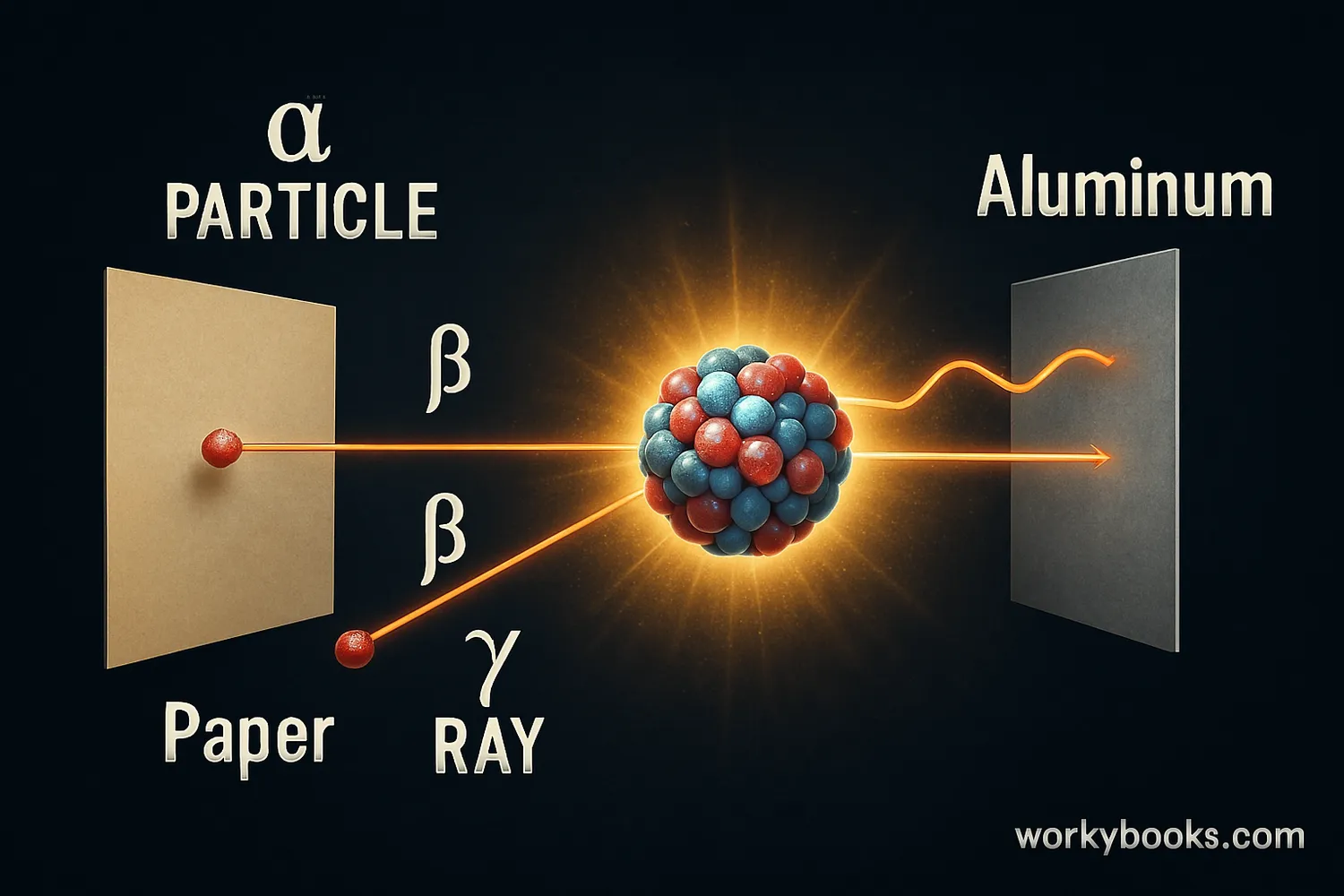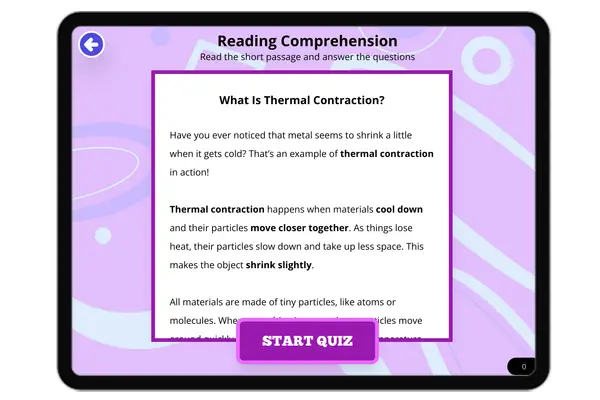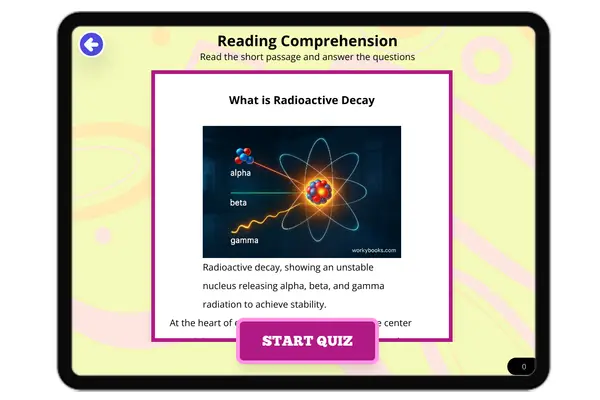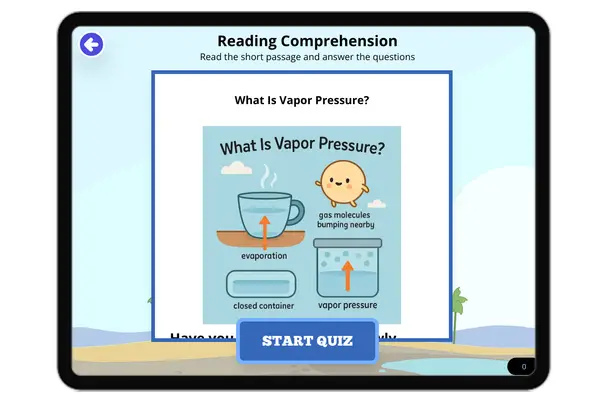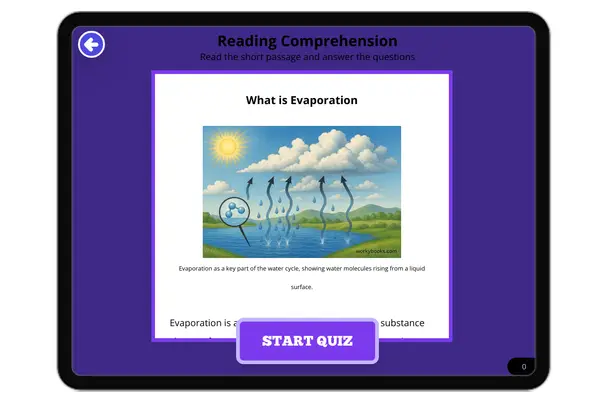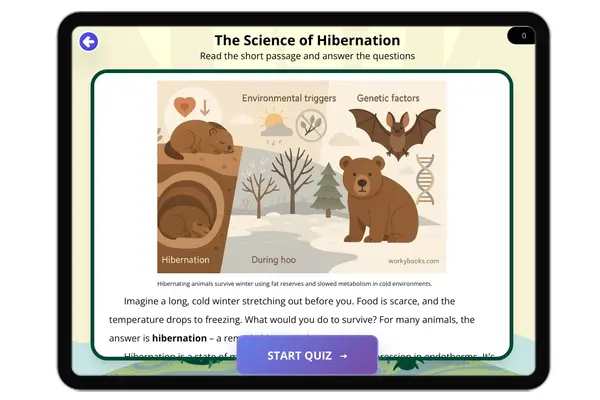What is Radioactivity — Reading Comprehension
Premium Resource
Grades
- 3
- 4
- 5
- 6
- 7
- 8
PRINT+DIGITAL RESOURCE
This learning resource is available in interactive and printable formats. The interactive worksheet can be played online and assigned to students. The Printable PDF version can be downloaded and printed for completion by hand.
About This Reader
This 300-350 word science reading passage provides a comprehensive overview of radioactivity for middle school students (grades 6-8). The content is structured to align with an experienced science teacher's approach, featuring an introduction that defines the topic, core explanations of radioactive decay and half-life, and relatable real-world connections. Key scientific terms such as radioactive decay, alpha particle, beta particle, gamma radiation, and half-life are bolded and used accurately. The passage concludes with a summary of key concepts and includes a "Fun Fact" to engage the reader. The language is factual, clear, and direct, targeting a Flesch Reading Ease score between 70–80 to ensure readability. This resource is designed to support learning objectives related to NGSS standard MS-PS1-4, focusing on the properties and interactions of matter.
Perfect For:
👩🏫 Teachers
- • Reading comprehension practice
- • Auto-graded assessments
- • Literacy skill development
👨👩👧👦 Parents
- • Reading practice at home
- • Comprehension improvement
- • Educational reading time
🏠 Homeschoolers
- • Reading curriculum support
- • Independent reading practice
- • Progress monitoring
Reading Features:
📖
Reading Passage
Engaging fiction or nonfiction text
❓
Comprehension Quiz
Auto-graded questions
📊
Instant Feedback
Immediate results and scoring
📄
Printable Version
Download for offline reading
🔊
Read Aloud
Voice-over with word highlighting


